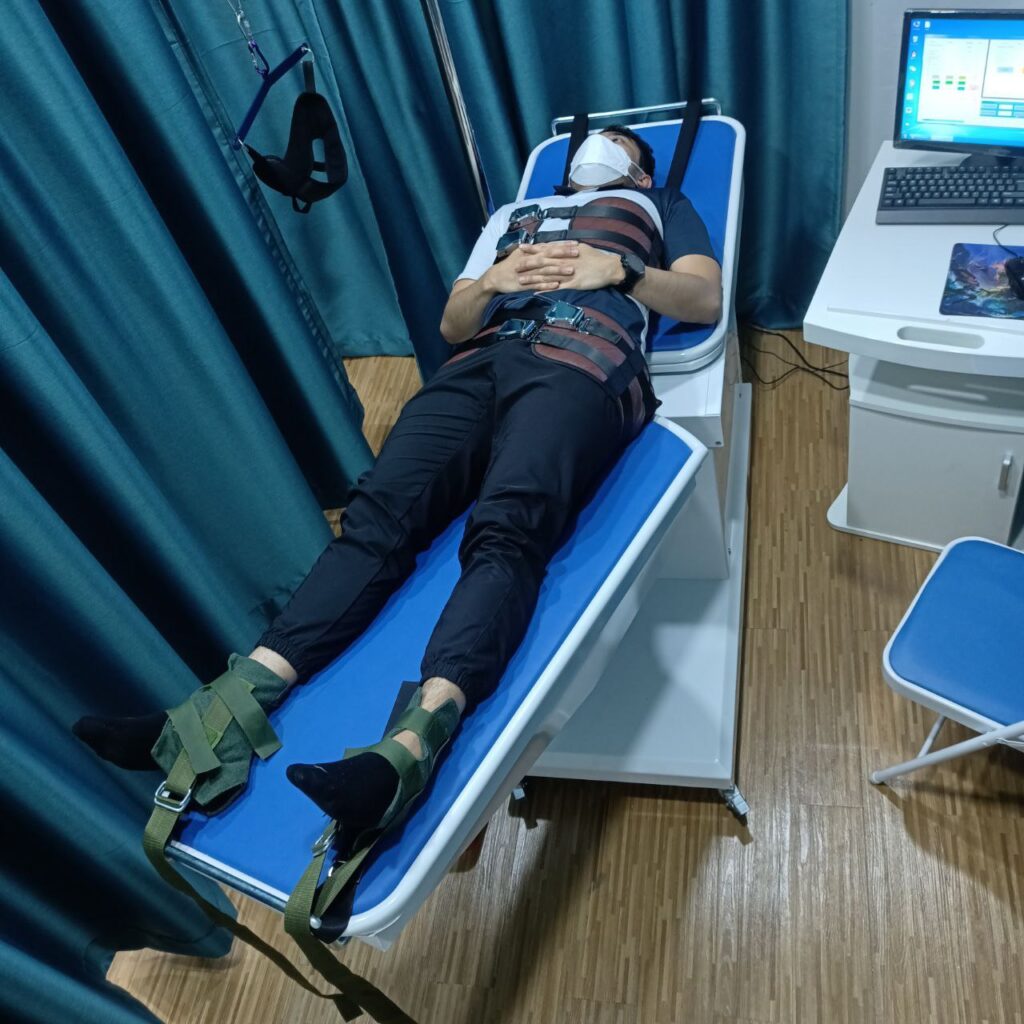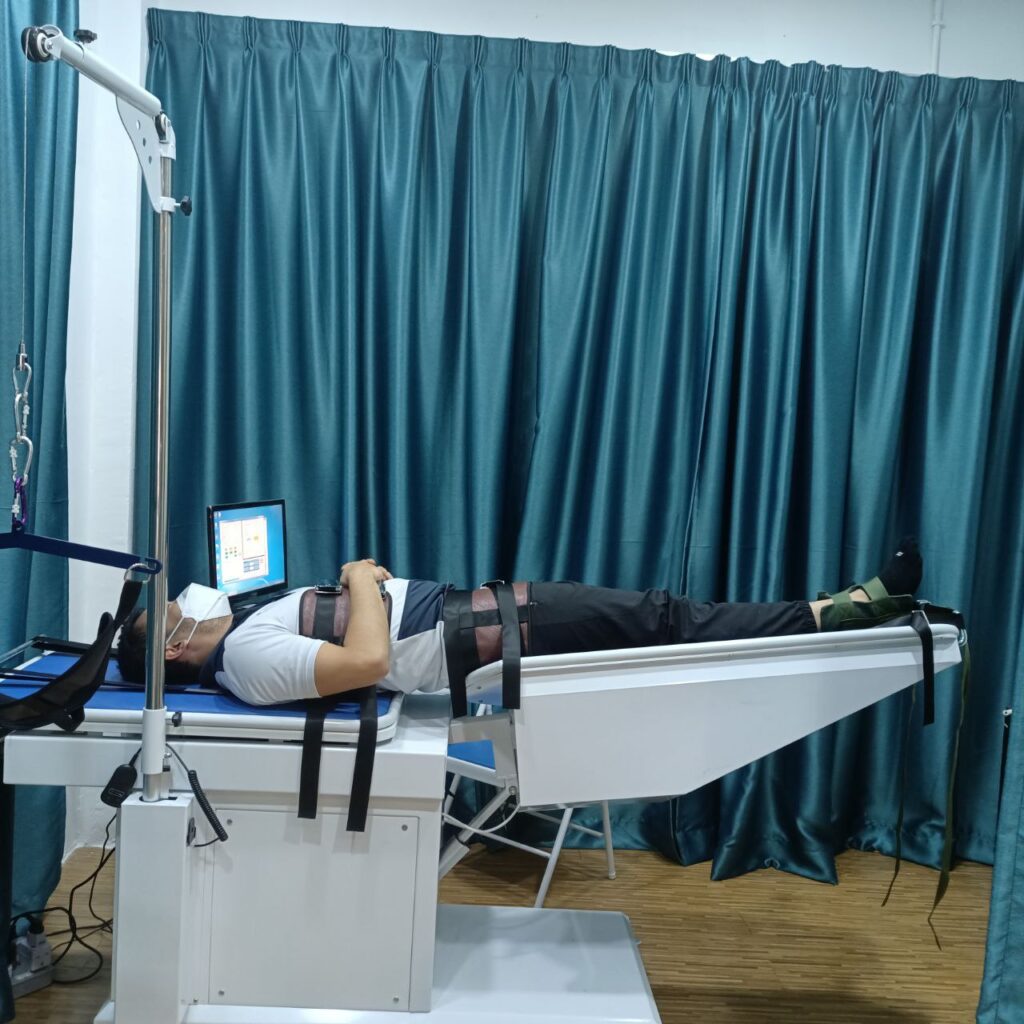Your spinal column is made up of a series of bones (vertebrae) stacked onto each other. From top to bottom, the column includes seven bones in the cervical spine, 12 in the thoracic spine, and five in the lumbar spine, followed by the sacrum and the coccyx at the base. These bones are cushioned by discs. The discs protect the bones by absorbing the shocks from daily activities like walking, lifting, and twisting.
Each disc has two parts: a soft, gelatinous inner portion and a tough outer ring. Injury or weakness can cause the inner portion of the disc to protrude through the outer ring. This is known as a slipped, herniated, or prolapsed disc. This causes pain and discomfort. If the slipped disc compresses one of your spinal nerves, you may also experience numbness and pain along the affected nerve.



Check if it’s a slipped disc
You can have a slipped disc in any part of your spine, from your neck to your lower back. The lower back is one of the more common areas for slipped discs. Your spinal column is an intricate network of nerves and blood vessels. A slipped disc can place extra pressure on the nerves and muscles around it.
Symptoms of a slipped disc include:
• pain and numbness, most commonly on one side of the body
• pain that extends to your arms or legs
• pain that worsens at night or with certain movements
• pain that worsens after standing or sitting
• pain when walking short distances
• unexplained muscle weakness
• tingling, aching, or burning sensations in the affected area
The types of pain can vary from person to person. See your doctor if your pain results in numbness or tingling that affects your ability to control your muscles.
What causes slipped discs?
A slipped disc occurs when the outer ring becomes weak or torn and allows the inner portion to slip out. This can happen with age. Certain motions may also cause a slipped disc. A disc can slip out of place while you are twisting or turning to lift an object. Lifting a very large, heavy object can place great strain on the lower back, resulting in a slipped disc. If you have a very physically demanding job that requires a lot of lifting, you may be at increased risk for slipped discs.
Overweight individuals are also at increased risk for a slipped disc because their discs must support the additional weight. Weak muscles and a sedentary lifestyle may also contribute to the development of a slipped disc.
As you get older, you are more likely to experience a slipped disc. This is because your discs begin to lose some of their protective water content as you age. As a result, they can slip more easily out of place. They are more common in men than women.
How do you treat slipped discs?
We can work with you to create a treatment programme that helps with your recovery and keeps you mobile.
This include:
• STRETCHING
• EXERCISE
• ULTRASOUND/ IFT/TENS
• MASSAGE
• HEAT/ COLD THERAPY
• MULTIDIMENSIONAL SPINAL DECOMPRESSION MACHINE
WHAT IS MULTI DIMENSIONAL SPINAL DECOMPRESSION MACHINE?
A multidimensional spinal decompression machine is a form of decompression therapy that relieves pressure on the spine. It can be performed mechanically.
This is used to treat herniated discs, sciatica, degenerative disc disease, pinched nerves, and many other back conditions.
WHAT IS MULTI DIMENSIONAL SPINAL DECOMPRESSION MACHINE DO?
Multidimensional spinal decompression machine stretches the spine to take pressure off compressed discs. This straightens the spine and improves the body’s ability to heal itself.
Candidates
People with spinal conditions benefit from this therapy. It is most commonly used to treat:
• slipped discs
• bone spurs
• degenerative disc disease
• herniated discs
• facet disease
• sciatica
• foramina stenosis
• pinched nerves
WHAT ARE THE BENEFITS OF MULTI DIMENSIONAL SPINAL DECOMPRESSION MACHINE?
Multidimensional spinal decompression machine is a non-surgical way to relieve pain and correct problems in the spine. This offers consistent relief for most people.
WHAT ARE THE RESULTS OF MULTI DIMENSIONAL SPINAL DECOMPRESSION MACHINE?
The results of spinal traction include pain relief, proper spinal alignment, and decompressed joints. Spinal traction stretches the muscles and bones in the back to combat the effects of gravity. Under the right circumstances, this could significantly improve the way you move and feel throughout the day.
WHY YOU MUST CHOOSE US?
With the help of physical therapies, many people find great success with the treatment programme. Treatment reduces pain and the body is more capable of healing itself. Some people only need therapy for a short period of time.












